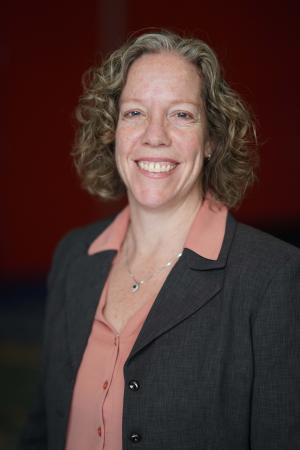Five questions for Susan Adams
By Janice Thorpe
This year's COLTT Conference promises a deep dive with a plenary panel focused on AI from Campus to Career: Preparing Students for a Shifting Educational and Workforce Landscape. Guiding this conversation will be Susan Adams, a leader in Colorado and globally in instructional design and faculty development whose career has focused on strategically integrating technology to enhance learning and teaching in higher education.

Adams is uniquely positioned to facilitate a nuanced discussion on AI’s challenges and opportunities as an expert in innovative curriculum design. Her passion and commitment led her to found Women in AI Colorado, an initiative dedicated to uplifting and upskilling our global society, with a particular focus on empowering women. Adams will share more insights at the 27th annual edition of COLTT, set for July 30 and 31 at CU Boulder.
1. How do you envision AI transforming curriculum and teaching, particularly in preparing students for evolving career demands?
I truly believe we’re on the brink of a world where every student builds their own AI learning coach – an always-on thought partner that organizes assignments, scans for internships and adapts instruction to individual learning preferences.
This level of personalization will push faculty to raise the bar, expecting more from students because they have such powerful tools. We’ve long aimed to shift from “sage on the stage,” and AI will inspire faculty to design experiences where students learn to collaborate with AI, craft effective prompts, critically evaluate outputs and translate insights into real-world solutions. This aligns perfectly with authentic learning design, helping students see how concepts apply directly to their future careers.

2. What ethical considerations are paramount as AI becomes more integrated into higher education, and how can faculty facilitate these crucial conversations?
There are several key ethical questions. Firstly, whose data are AI models trained on, and who ultimately benefits? While AI outputs can be biased, we have agency to critique them and even provide different data. Secondly, how transparent are AI decision-making processes, both from the user’s perspective and from the developers like OpenAI or Claude? Institutions need to analyze this to engage ethically. Finally, what biases might be encoded in these models, and who is being harmed by them? Asking “who is being harmed?” specifically can lead to more holistic conversations and “aha” moments. Faculty can facilitate these discussions by empowering students to ask these questions and understand their own agency in using these tools.
3. If you could design a futuristic AI-powered classroom, what key features would it include to best prepare students for an AI-driven workforce?
I would build an “AI collaborative lab” – a real-time workspace where each student works alongside an AI assistant. This lab would focus on relevant micro-projects tied to local industry needs, essentially making every classroom an AI innovation lab, as suggested by Beth Rudden in her keynote presentation at COLTT. It’s about enabling students and faculty to do deep thinking on how current concepts align with career goals and industry impacts. The lab would also provide instant scaffolding and feedback on projects, helping students reach higher-order thinking. This experience teaches not just subject matter but the critical skill of partnering effectively with AI in problem-solving, ensuring equity and access to these advanced learning models.
4. If you had one superpower to transform higher education in the AI era, what would it be and how would it help students transition from campus to career?
My superpower would be “Contextual Career Visioning.” This would allow any student, at any moment, to project their current coursework into concrete career pathways, showing them precisely how each skill they’re learning maps to real-world roles and the competencies they’ll need next. It’s about making that connection instantly clear and tangible, potentially even connecting them with local employers or alumni for mentorship. This visioning and mentoring piece would directly bridge their academic journey to their professional future.
5. As the plenary panel facilitator, your role is to gather insights from multiple perspectives: workforce, vendors and ethics/philosophical experts – no small challenge. What’s your game plan to ensure attendees walk away not just informed, but with actionable strategies? What can we expect you to explore with these diverse voices?
My game plan is to orchestrate a dynamic exploration that moves us beyond the common “fear and prohibition” narrative, focusing instead on how to harness AI as a creative collaborator. What makes this panel unique is how these perspectives intersect. Beth Rudden brings the ethical foundation, helping us understand what trust and transparency look like in practice. Jennifer Henderson bridges the gap between what we’re teaching and what the evolving workforce actually needs. Francis Hoang shows us how to implement AI tools without losing our human-centered values. Together, they’ll help us see the full picture. Attendees can expect a session that challenges assumptions and equips attendees with actionable frameworks to thoughtfully integrate AI, ensuring both students and institutions can truly flourish in this new era.
Learn more about COLTT’s AI panel discussion, July 31 at CU Boulder, on the COLTT website. Secure your spot at the COLTT Conference now on the registration site.

